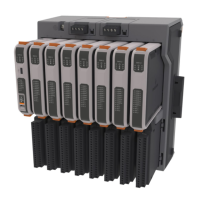Site Considerations for Equipment Installation, Grounding, and Wiring Manual
D301452X012
October 2019
Wiring Techniques 27
Section 5: Wiring Techniques
This section covers the following topics:
▪
Overview
▪
Intrument Wiring
5.1 Overview
This section provides information on good wiring practices, including good wire preparation and
connection techniques. It also discusses the installation of power and “measurement & control”
wiring; circulating and ground power loops; bad relays; and resolutions for common and
uncommon problems.
5.2 Device Wiring
This section briefly discusses each of the following rules, placing emphasis on avoiding problems
and assuring equipment safety.
Rule 1 – Never use common returns.
Rule 2 – Use twisted shielded pairs (with overall insulation) on all signal/control circuits.
Rule 3 – Ground cable shields at one end only.
Rule 4 – Use known good earth grounds (rod, bed, system) and test them periodically,
Rule 5 – Earth connections must use smoothly dressed large wire.
Rule 6 – Perform all work neatly and professionally.
Rule 7 – Route high power conductors away from signal wiring according to NEC rules.
Rule 8 – Use appropriately sized wires as required by the load.
Rule 9 – Use lightning arresters and surge protectors.
Rule 10 – Make sure all wiring connections are secure.
5.2.1 Avoid Common Returns
Using common returns on I/O wiring is one of the most common causes of obscure and difficult-to-
troubleshoot control signal problems. Since all wires and connections have distributed resistance,
inductance, and capacitance, using common returns considerably reduces the chances of
achieving a balanced circuit or a balanced system. Balanced circuits and systems only occur when
all currents and voltages developed in association with each of the common returns are equal. In a
balanced system (or circuit) prevents the introduction of noise or measurement errors due to
“sneak circuits.”
Figures 5-1 and 5-2 show the difference between testing an I/O circuit that is discrete and has no
sneak circuits and one that use common returns. Common sense tells us that it is tough to mix up

